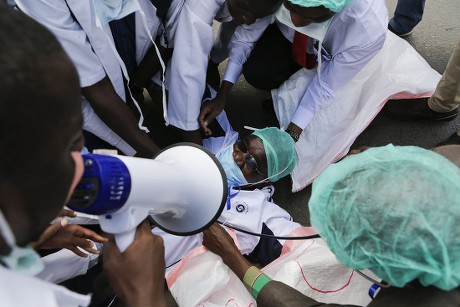Top diseases killing Kenyans through outbreaks revealed! Kenya has experienced a significant increase in disease outbreaks over the past 15 years, with six counties—Garissa, Nairobi, Nakuru, Wajir, Mandera, and Mombasa—responsible for nearly a quarter of these cases. This alarming trend was revealed in a report by the Ministry of Health, which examined disease patterns from 2007 to 2022.
Published in the BMC Research Notes journal on October 15, the analysis highlights the increasing challenges Kenya faces in managing public health crises.
Growth in Annual Outbreaks Across Counties
In 2012, only one county in Kenya reported a disease outbreak. However, by 2022, all 47 counties reported outbreaks, driven primarily by the global Covid-19 pandemic. Researchers attribute this rise to both improved disease surveillance and an actual increase in outbreak occurrences.
The study, conducted by public health experts like Farida Geteri and Samuel Kadivane from the Disease Surveillance and Response Unit, found that an average of four outbreaks were reported per county over 15 years. Nairobi, the most populous region, reported the highest number of cases and accounted for a significant portion of both cases and deaths.
Factors Behind Disparities in Disease Burden
The study identifies key factors influencing disease outbreak disparities between counties. Regions with high population densities, such as Nairobi and Mombasa, have a higher risk of outbreaks due to easier disease transmission. Border counties like Garissa, Wajir, and Mandera face increased vulnerability due to proximity to neighboring countries, which can facilitate the cross-border spread of infectious diseases. Limited access to healthcare services further complicates timely outbreak response, particularly in rural and semi-arid regions.
“The frequency of outbreaks in border counties underscores the need for coordinated cross-border surveillance and healthcare collaboration,” the authors noted, stressing that comprehensive healthcare access is essential in preventing and managing outbreaks in these areas.

Key Diseases Driving Kenya’s Health Crisis
Over the last 15 years, 23 different diseases have been reported as part of Kenya’s 457 recorded outbreaks. These include major public health threats such as Covid-19, cholera, malaria, kala-azar, and measles. The study found that these diseases accounted for a considerable disease burden, with an estimated 6,575 deaths recorded during the analyzed period. The Ministry of Health’s surveillance program, the Integrated Disease Surveillance and Response (IDSR) strategy, monitors outbreaks by collecting and analyzing health data, which is then stored in the Kenya Health Information System.
Interestingly, the study reported a shift in how certain diseases are classified, such as HIV, which is no longer considered an outbreak in Kenya. This reclassification reflects the country’s success in managing HIV through effective intervention strategies, including antiretroviral therapies and public health campaigns. “This achievement underscores the progress Kenya has made in managing and reducing the impact of HIV,” noted lead researcher Geteri.
Need for Strengthened Immunization and Early Response Systems
The report emphasizes the need for Kenya to strengthen its immunization programs and develop an early warning and response system to manage outbreaks more effectively. The prevalence of vaccine-preventable diseases like measles and cholera highlights a gap in the immunization coverage in certain regions, which must be addressed to curb the spread of these preventable illnesses.
With diseases prone to epidemics, such as rabies and Rift Valley fever, posing consistent threats, officials are calling for enhanced preparedness and response mechanisms. “It is critical that Kenya invests in early warning systems to identify and control potential outbreaks before they escalate,” the report says, underlining the importance of prevention and preparedness.
Zoonotic Diseases: An Ongoing Threat
The study also noted the impact of zoonotic diseases—diseases that can spread from animals to humans—which remain a significant public health concern in Kenya. In 2015, three zoonotic diseases—anthrax, rabies, and Rift Valley fever—were identified as the most urgent threats. Kenya’s livestock economy, which is integral to the livelihoods of many rural communities, plays a role in the persistence of these zoonotic diseases.
The report stresses the importance of controlling zoonotic diseases through vaccination programs for animals, public awareness campaigns, and close monitoring in areas where humans and animals frequently interact.
Conclusion
The Ministry of Health’s analysis provides critical insights into Kenya’s public health challenges. The rising number of outbreaks across all counties and the concentration of cases in six key counties highlight the urgent need for a multi-faceted approach to disease control. Strengthened immunization efforts, improved healthcare access, and efficient early warning systems are essential for Kenya to mitigate the frequency and impact of future outbreaks. As Kenya grapples with these health issues, strategic interventions and public health reforms will be essential in reducing the country’s disease burden and safeguarding its population from preventable health crises.


















